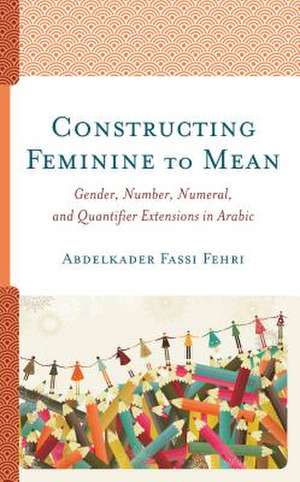CONSTRUCTING FEMININE TO MEAN
Autor Abdelkader Fassi Fehrien Limba Engleză Hardback – 14 aug 2018
Preț: 687.60 lei
Preț vechi: 892.99 lei
-23% Nou
Puncte Express: 1031
Preț estimativ în valută:
131.57€ • 137.74$ • 108.87£
131.57€ • 137.74$ • 108.87£
Carte tipărită la comandă
Livrare economică 05-19 aprilie
Preluare comenzi: 021 569.72.76
Specificații
ISBN-13: 9781498574556
ISBN-10: 1498574556
Pagini: 254
Dimensiuni: 152 x 229 x 21 mm
Greutate: 0.58 kg
Editura: Rowman & Littlefield
ISBN-10: 1498574556
Pagini: 254
Dimensiuni: 152 x 229 x 21 mm
Greutate: 0.58 kg
Editura: Rowman & Littlefield
Notă biografică
Abdelkader Fassi Fehri is professor of arts and human sciences at Mohammed V University of Rabat
Descriere
Two core concepts are developed in this monograph. First is feminine, or the marked Gender, a property of concepts that are distinguished along dimensions of individuation and unitization, not necessarily sex. The second is unity, a property of singularities, pluralities, and quantities.
